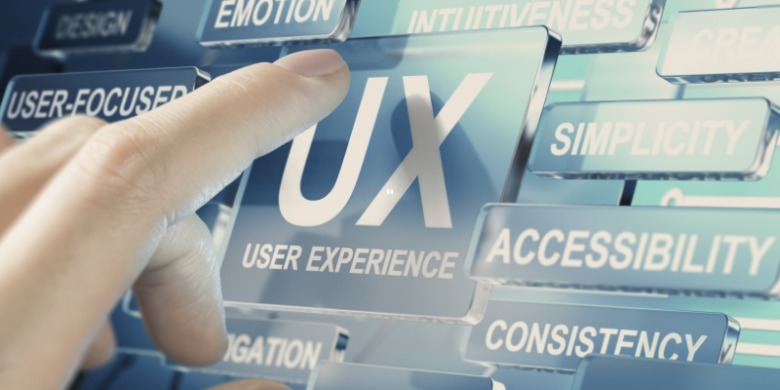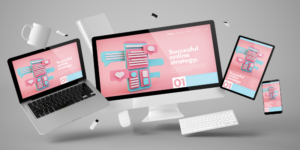In recent years, we have witnessed a significant transformation in the field of user experience (UX) design. As technology advances and user expectations evolve, UX professionals are challenged to rethink their approaches and explore new possibilities. It is within this context that the concept of UX Design 2.0 emerges, an updated and more comprehensive approach to creating engaging and impactful digital experiences. In this article, we will explore the key features of UX Design 2.0 and discuss how this evolution is shaping the future of user experience design.
A Holistic View of Experience
UX Design 2.0 goes beyond the user-centered approach and embraces a more holistic view of experience. It recognizes that the user experience extends beyond interaction with the digital interface and encompasses the entire context in which the user is immersed. This includes factors such as the physical environment, devices, emotions, and even social interactions. UX Design 2.0 seeks to understand and design solutions that address these different dimensions, offering a more complete and meaningful experience.
Personalization and Contextualization
Personalization and contextualization are fundamental pillars of UX Design 2.0. As users seek increasingly personalized experiences, UX designers need to create solutions that adapt to individual needs and preferences. Additionally, the context in which the interaction takes place plays a crucial role in the user experience. UX Design 2.0 seeks to understand and leverage contextual information to deliver the right information, at the right time, and in the most relevant way for each user.
Integration of Emerging Technologies
The advancement of technology presents new opportunities and challenges for user experience design. UX Design 2.0 embraces and integrates emerging technologies such as artificial intelligence, augmented reality, and the Internet of Things to create innovative and engaging experiences. These technologies expand the possibilities of interaction and allow designers to create more sophisticated and immersive solutions.
Data-Driven Design
UX Design 2.0 values the importance of data in design decision-making. Through data analysis, UX designers can gain insights into user behavior, identify patterns and trends, and conduct iterative testing to continuously improve the user experience. Data-driven design enables designers to make evidence-based decisions, reducing subjectivity and increasing the effectiveness of the designed solutions.
Multidisciplinary Collaboration
UX Design 2.0 promotes multidisciplinary collaboration, bringing together professionals from different areas such as design, research, development, and marketing. This approach encourages the exchange of knowledge, experiences, and perspectives, resulting in more comprehensive solutions that align with user and business needs. Multidisciplinary collaboration in UX Design 2.0 creates a synergy between different specialties, enabling the creation of more impactful products and services.
Conclusion
UX Design 2.0 represents a significant evolution in the field of user experience design. It expands the designer’s perspective by incorporating a holistic approach and integrating emerging technologies. By valuing personalization, contextualization, data, and multidisciplinary collaboration, UX Design 2.0 empowers professionals to create engaging and impactful digital experiences that meet the needs and expectations of users. As technology continues to advance and user demands evolve, UX Design 2.0 becomes an essential approach to creating innovative and relevant solutions. The future of user experience design is being shaped by UX Design 2.0, and it is up to professionals to embrace this evolution to create memorable and meaningful experiences for users.
UX Design 2.0 represents a paradigm shift in the way we approach and create user experiences. It is an evolution that goes beyond surface-level design considerations and delves into the core aspects of human-centered design. In this concluding section, we will explore the implications and future prospects of UX Design 2.0.
One of the significant advantages of UX Design 2.0 is its ability to adapt to the ever-changing technological landscape. As new technologies emerge, such as virtual reality, voice interfaces, and wearable devices, UX designers must stay abreast of these developments and find innovative ways to integrate them into the user experience. UX Design 2.0 embraces this dynamic nature and provides a framework for designing experiences that are not only engaging but also future-proof.
Furthermore, the rise of mobile devices and the prevalence of digital touchpoints have created a need for seamless cross-channel experiences. UX Design 2.0 recognizes the importance of designing consistent and cohesive experiences across multiple platforms and devices. Whether a user is interacting with a website on their desktop, a mobile app on their smartphone, or a voice assistant on a smart speaker, UX Design 2.0 ensures that the experience is harmonious and coherent.
Another significant aspect of UX Design 2.0 is its emphasis on accessibility and inclusivity. Designing for a diverse range of users, including those with disabilities, is no longer an afterthought but an integral part of the design process. UX Design 2.0 encourages designers to consider accessibility from the outset and implement inclusive design principles that cater to the needs of all users. This approach not only ensures equal access to information and services but also opens up new opportunities for innovation and creativity.
In the realm of UX research, UX Design 2.0 places a strong emphasis on continuous learning and iteration. User feedback and data analysis are crucial in understanding user behaviors, preferences, and pain points. By leveraging user insights, UX designers can refine and improve their designs over time, creating experiences that are more intuitive and delightful.
The future of UX Design 2.0 holds exciting possibilities. As technology continues to advance, we can expect further integration of emerging technologies such as artificial intelligence, machine learning, and natural language processing. These technologies have the potential to revolutionize the way we interact with digital interfaces, and UX designers will play a crucial role in harnessing their power to create seamless and intuitive experiences.
Moreover, UX Design 2.0 will continue to evolve alongside user expectations and societal changes. As users become more sophisticated and demand personalized and meaningful experiences, UX designers must stay attuned to these evolving needs and adapt their approaches accordingly. This requires a deep understanding of human psychology, cultural influences, and user motivations.
In conclusion, UX Design 2.0 represents a significant leap forward in the field of user experience design. By embracing a holistic perspective, integrating emerging technologies, promoting inclusivity, and leveraging user insights, UX designers can create experiences that resonate with users on a deeper level. The future of UX Design 2.0 is filled with endless possibilities, and it is up to designers to explore and push the boundaries of what is possible. By embracing this evolution, we can create transformative and impactful user experiences that shape the digital landscape for years to come.



